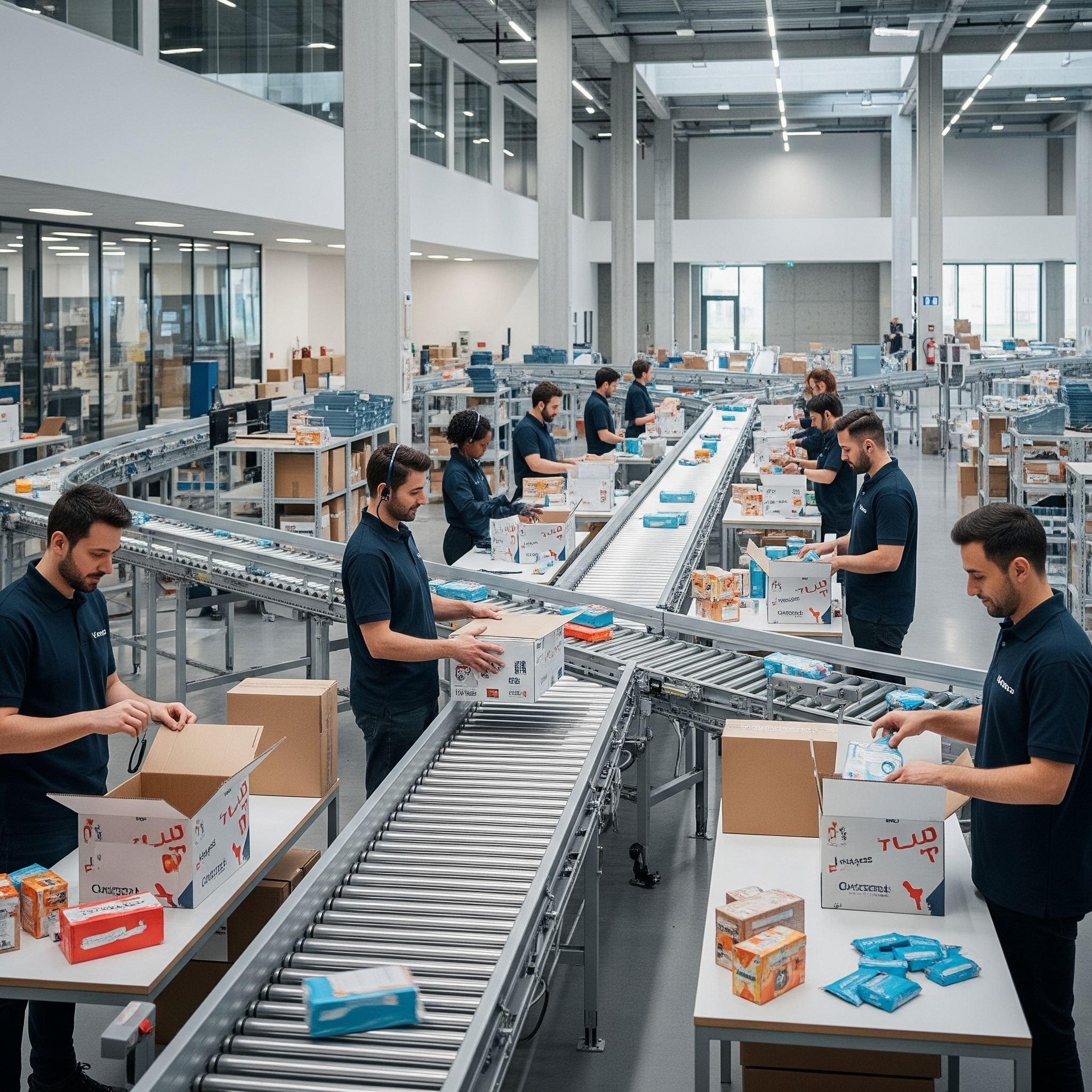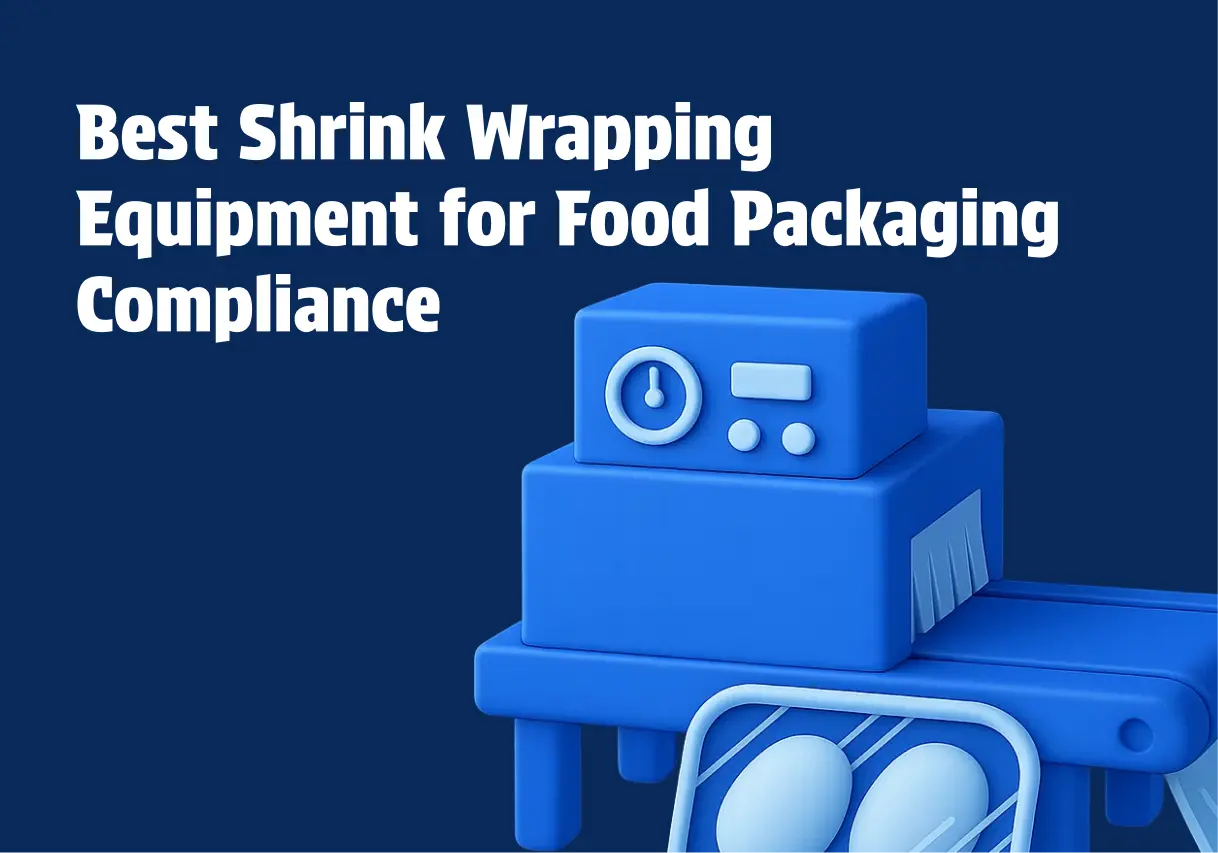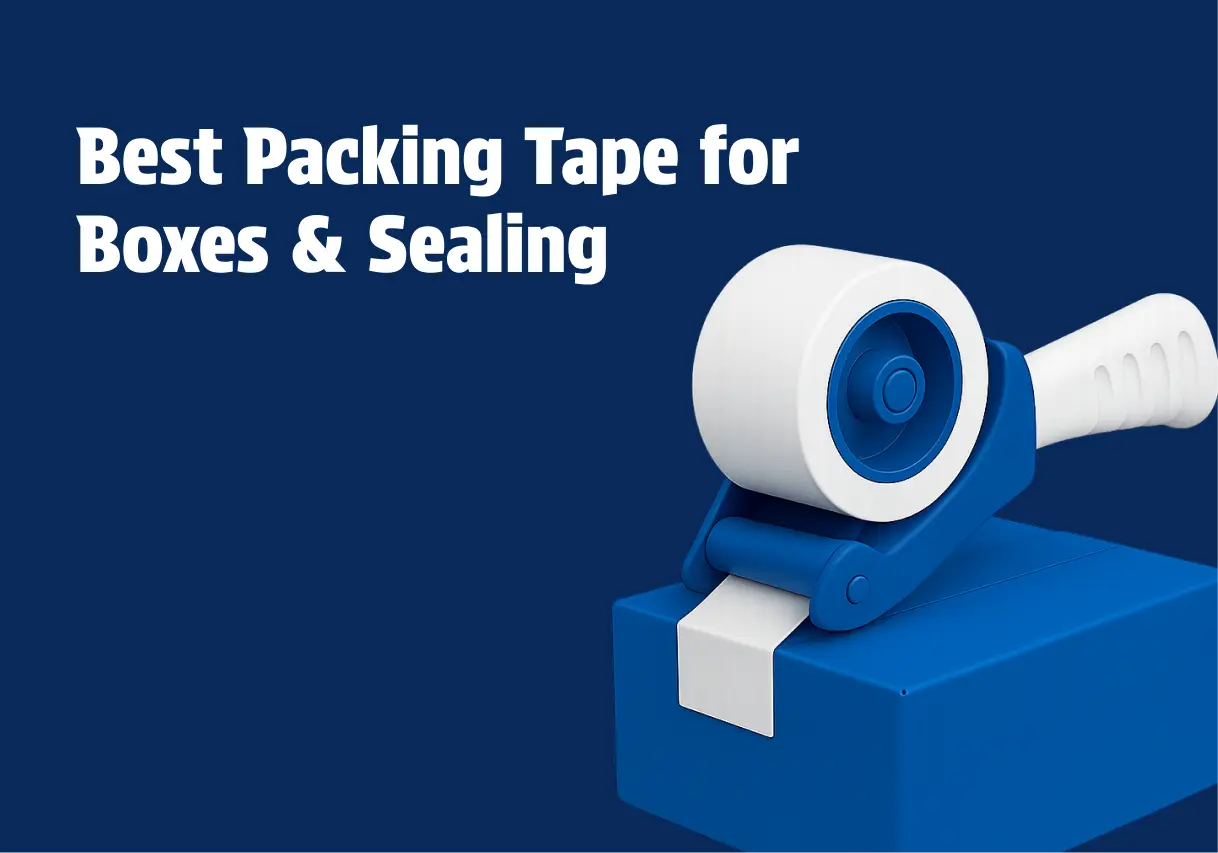Finding the right packing tape for a business is crucial for ensuring products arrive safely. With so many options available, it can be overwhelming to choose the perfect tape that balances adhesion, durability, and ease of use.
This guide will walk you through the different types of tapes and key features to help a business find the best packing tape for boxes and secure sealing.
Types of Packing Tape

Not all tapes are created equal. Each type is designed for a specific purpose, from securing heavy-duty shipments to temporary bundling. Knowing the differences can save time and money and prevent damage to packages.
Carton-Sealing Tape
Carton-sealing tape, often called box tape, is the most common type used for sealing corrugated cardboard boxes. It's typically made from a polypropylene (BOPP) film with a strong hot melt, acrylic, or natural rubber adhesive. This tape is a great all-around choice for a wide variety of shipping and storage needs.
- Vibac Carton Sealing Tape: Vibac offers a range of high-performance tapes, including the VIBAC® BOPP BOX SEALING TAPE 630. This industrial-grade tape has a total thickness of 1.83 mils and is designed for medium to heavy packaging applications. It features a synthetic rubber hot melt adhesive and a conformable film backing.
- STA Tapes Hot Melt Tape: STA Tapes also provides a reliable hot melt tape for carton sealing. The 1616 Economy tape is 1.5 mil thick with a synthetic rubber hot melt adhesive, making it ideal for light to moderate cartons under normal shipping conditions. It is known for its quick tack and reliable performance across a wide range of temperatures.
Strapping Tape
Also known as filament tape, strapping tape is reinforced with fiberglass filaments for extra strength. This tape is ideal for heavy-duty applications, such as bundling heavy items, palletizing, and securing bulky cartons. It is much stronger than standard box tape and resists stretching and tearing.
- STA Tapes Filament Tape: STA Tapes offers 6701 Industrial Filament Tape with a tensile strength of 100 lbs/in and a total thickness of 3.9 mils. This tape is highly durable, designed to resist edge-bleeding, splitting, and delaminating under severe shipping conditions, making it an excellent choice for securing heavy loads.
Cold-Temperature Tape
When shipping products that will be stored or transported in cold environments, a standard acrylic or hot-melt adhesive tape may fail. Cold-temperature tapes are specifically engineered to maintain their adhesive strength in frigid conditions, ensuring a secure seal on frozen or refrigerated packages.
- Vibac Cold Temperature Tape: Vibac provides a specialized cold-temperature tape like the VIBAC® BOPP BOX SEALING TAPE 520. This tape has a synthetic rubber-based adhesive and a total thickness of 1.61 mils. It is formulated to be used in refrigerated or room-temperature applications and performs reliably when stored in low-temperature environments.
Water-Activated Tape (WAT)
Water-activated tape, or gummed tape, is a kraft paper tape with a starch-based adhesive that is activated by water. When applied, it creates a strong, permanent bond with the corrugated fibers of the box, making the box itself more rigid and tamper-evident. It is an excellent choice for high-volume shipping and security-sensitive applications.
- STA Tapes Water-Activated Tape: STA Tapes offers water-activated tape with a synthetic starch-fortified, non-toxic, and odorless adhesive. It is designed for fast and permanent adhesion, even in dusty or dirty environments, and provides protection against pilferage because packages cannot be resealed without detection.
Masking Tape
While masking tape isn't typically used for sealing shipping boxes, it has its place in a packaging environment. It’s a pressure-sensitive tape that can be easily removed without leaving a residue, making it useful for temporary bundling, labeling, or protecting surfaces during painting.
Key Features to Consider
When choosing a tape, a few key features determine its effectiveness. Considering these factors will help a business select a tape that performs perfectly for specific needs.
- Adhesive Strength and Types: The adhesive is what makes the tape stick. Acrylic adhesives offer a strong, long-lasting bond and are resistant to UV light and temperature changes. Hot melt adhesives provide aggressive, instant tack but may perform poorly in extreme temperatures. Natural rubber adhesives offer the strongest initial grab and are ideal for dusty or recycled corrugated surfaces.
- Ease of Use and Application: A quality tape should unroll smoothly without splitting or curling. Using a tape dispenser can significantly increase efficiency and ensure consistent application.
- Durability and Environmental Resistance: Tapes should withstand the rigors of shipping. Look for tapes that are tear-resistant and can handle exposure to dust, moisture, and temperature fluctuations.
Choosing the Right Tape for Box Dimensions and Weight
Matching the tape to the box is critical. Using a tape that is too narrow or thin for a heavy box can lead to package failure.
- Matching Tape Width and Length to Box Size: Standard boxes typically require 2-inch-wide tape. For larger or heavier boxes, a 3-inch wide tape provides a more secure seal.
- Determining Required Tape Thickness Based on Box Weight: Tape thickness is measured in mils. For lightweight packages (under 20 lbs), a tape with a thickness of 1.6 to 2.0 mil is sufficient. For heavier boxes, a thickness of 2.5 mil or more is recommended to prevent the tape from stretching or breaking.
Top Packing Tape Recommendations

When choosing a tape, it's helpful to consider popular, reliable options. Here are some top recommendations that cater to different needs and budgets.
- Vibac Carton Sealing Tapes: Vibac offers a diverse range of tapes with different adhesive types and thicknesses, suitable for various applications. Their hot melt and acrylic tapes, like the VIBAC® BOPP BOX SEALING TAPE 630 with a synthetic rubber hot melt adhesive, are excellent for general-purpose carton sealing, offering strong bonds and reliable performance.
- STA Tapes Packaging Tapes: STA Tapes provides specialized tapes for specific needs, including hot melt, acrylic, and water-activated options. Their tapes, such as the 1535 Supreme industrial-grade acrylic tape, are known for durability and performance in challenging environments, with features like UV light resistance and strong adhesion to a wide range of surfaces.
- Scotch Packaging Tape: This tape provides a strong, reliable seal for a wide variety of boxes. Its aggressive acrylic adhesive ensures packages remain securely closed.
- P. PERFECTAPE Packing Tape: Ideal for general-purpose packing, this tape offers great value in multi-packs, making it a staple for any business that ships frequently.
- Duck Packaging Tape: Duck brand tapes are known for their durability and consistent quality. They come in various options, including heavy-duty and fragile-item specific versions.
- Gorilla Packaging Tape: Gorilla tape is engineered to withstand extreme conditions, making it perfect for shipments that may encounter heat, cold, or moisture.
- Tape King Packing Tape: For high-volume operations, Tape King provides an economical bulk option without sacrificing quality, ensuring a reliable seal at a low cost per roll.
Buying Guide for Packing Tapes

Choosing the right packing tape can make a big difference in the security and efficiency of a shipping process. Consider these factors when making a purchase.
1. Importance of Tape Type
The type of adhesive is the most important consideration. For general-purpose carton sealing, a hot melt or acrylic tape is often sufficient. If a more durable, tamper-evident seal is needed, water-activated tape is a great choice. For heavy-duty bundling and palletizing, a reinforced filament tape is essential.
2. Adhesion and Size Considerations
The width and thickness of the tape must be appropriate for the box size and weight. A 2-inch wide, 1.6-mil thick tape works for most small-to-medium-sized boxes. However, for heavy or oversized cartons, opt for a wider, thicker tape (e.g., 3 inches wide, 2.5 mil or more) to ensure a secure seal.
3. Usability and Dispenser Compatibility
Look for tapes that unroll quietly and smoothly to increase efficiency and reduce workplace noise. Using a compatible tape dispenser is also crucial for consistent application and to prevent wrist and hand fatigue. Most hand-held dispensers are designed for standard 2-inch tape, but it is wise to check the dispenser's specifications.
Final Thoughts on Tape Suitability
Choosing the best box tape for a business means looking beyond the price tag. By understanding the different types of tape, the importance of key features like adhesive strength and durability, and how to match the tape to box dimensions and weight, packages can be securely sealed and protected. From standard carton-sealing tapes for everyday use to specialized tapes for extreme conditions or heavy-duty applications, there is a perfect solution for every business.
When considering packaging supplies like carton-sealing tape, a distributor like John Maye Company provides access to a wide variety of products to meet these diverse needs.
FAQs
1. What kind of tape should I use for heavy boxes?
For heavy boxes, a tape with a thickness of 2.5 mil or more is recommended. You should also consider a tape with a strong hot-melt or natural rubber adhesive for a secure bond that can withstand the weight.
2. How can I prevent my tape from failing in cold weather?
For shipments that will be exposed to low temperatures, it's best to use a specialized cold-temperature tape with a synthetic rubber or cold-resistant acrylic adhesive. Standard tapes can lose their tackiness and become brittle in the cold.
3. What is the shelf life of packing tape?
Most acrylic and natural rubber adhesive tapes have a long shelf life, often lasting for a year or more when stored in a cool, dry place. Hot melt tapes, however, can have a shorter shelf life and may lose their adhesive properties over time, so it's best to use them within six months of purchase.
4. Can I use packing tape on recycled cardboard boxes?
Yes, but it's important to choose a tape with a strong, aggressive adhesive. Recycled cardboard often has a dusty or rougher surface, so a natural rubber or hot-melt adhesive tape will provide a better, more secure bond than a standard acrylic tape.
5. What is the difference between mil thickness and adhesive strength?
Mil thickness refers to the physical thickness of the tape's film backing and adhesive layer. While a thicker tape is generally more durable and less likely to tear, it doesn't always guarantee a stronger bond. Adhesive strength is a separate measure of how well the tape sticks to a surface, so it's important to consider both factors when choosing a tape.
6. Is it possible to get custom-printed packing tape?
Yes, many suppliers offer custom-printed packing tape. This is a great way to add branding, handling instructions, or security information directly to a package, making it an effective marketing tool and an added layer of security.

Blogs

Best Shrink Wrap Machines for Your Business
Discover the best shrink wrapping equipment for food packaging compliance. Conflex offers high automation. Increase efficiency now!

Top Banding Machines for Packaging Solutions
Find top banding machines for small to mid-size packaging lines! Discover flexible automation options and sustainability features. Optimize efficiency today!

Best Pallet Wrapping Machines for Manufacturing Plants 2025
Explore the best pallet wrapping machines for manufacturing plants in 2025. Learn how to choose, compare key models, and reduce wrapping costs.
